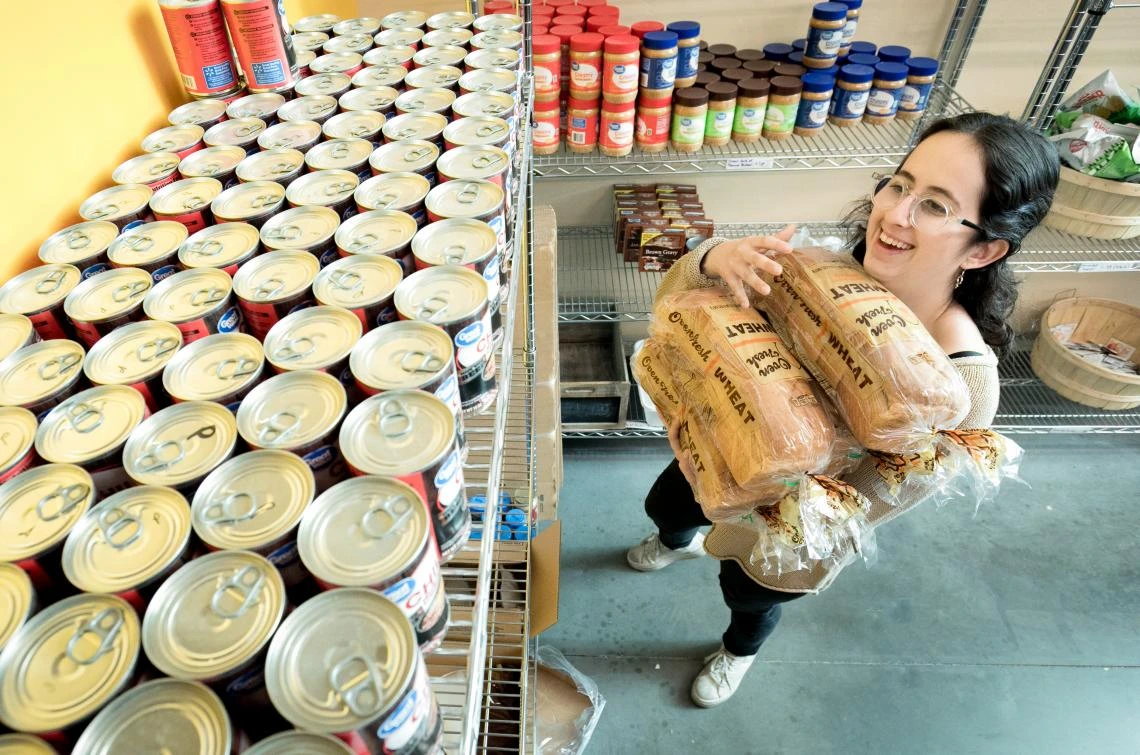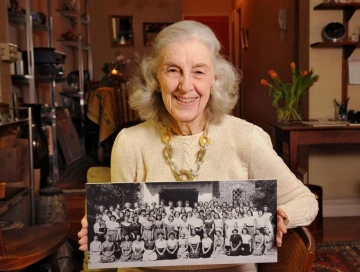Campus Pantry Gift Will Sustain What Students Began
A University of Arizona alumna is fighting campus hunger from 2,400 miles away.


Natalie Auster Levinson
New York City resident Natalie Auster Levinson ’53 recently donated $250,000 to establish an endowment that will support the operations of the university’s Campus Pantry in perpetuity.
“To have food insecurity, in the USA, is completely unacceptable,” she said. “And students shouldn’t have to struggle and worry about where their next meal is coming from.”
Two graduate students started the pantry in 2012 to help students faced with food insecurity. Today the pantry has moved to the Student Union Memorial Center and had increased hours to three days a week for 12 hours total prior to classes moving online in March. Students can select from canned foods, peanut butter, bread, eggs and produce.
Last fall, the pantry distributed 80,000 pounds of food and served nearly 1,000 students per week.
A 2016 survey conducted by the university’s office of student affairs found that 28% of undergraduate students often or always skipped meals or ate less because of financial constraints.
Campus Pantry Coordinator Bridgette Nobbe said the percentage is likely higher now due to increases in housing and tuition costs.
“We see students arrive on campus with their tuition covered by scholarships but who have to take out loans to cover housing and books — which then leaves little left over for basic necessities,” Nobbe said.
Students can work a part-time job to help make ends meet, but doing so means less time dedicated to their education, she said.
“You can’t study well when you’re hungry,” Nobbe said. “If you’re hungry, you’re not going to be focusing very well on your labs. You’re not going to be focusing on your homework. It’s as simple as that.”
A Need to Do More
Originally from Connecticut, Levinson enrolled at Arizona because it was one of a very few universities that offered courses in textiles and clothing design.
Arizona was just the first step toward her eventual career in the dynamic fashion industry in New York City.
She fondly remembers living in Gila Hall. She especially recalls the sinks inside the rooms that allowed her to fix a salad or sandwich without having to leave the dorm. She said the thought of a student going hungry while she attended school was unheard of.
“Our problem back then was not finding a good place to eat,” she said.
Last year, Levinson wanted to learn more about how to support students. She was connected remotely with Nobbe, who took her on a virtual tour through the pantry. At the time, the pantry needed a blast refrigerator to help store leftover food from catered campus events.
Levinson immediately donated the funds for the fridge.
“The fridge has been a blessing,” Nobbe said. “In one semester, we were able to store 5,000 complete meals for distribution.”
Levinson wanted to do more to support the pantry’s cause, and in December she donated $250,000.
“I just hope that my gift will keep the pantry going and help enhance the vital service it provides to students in need,” Levinson said.
Making an Impact
Michelle Sun ’13, co-founder of the pantry, said getting the program off the ground is one of her favorite memories as a graduate student.
“We only had 10 people come to our first distribution, but I still remember how impactful it was to each person we served,” she said. “Our mentality was that as long as we’re making an impact on one person, this is what we want to be doing.”
In the early days, Sun stored nonperishable food in a closet at Yavapai Hall. She and a few student volunteers took shopping carts to and from a makeshift distribution space in the El Portal building, part of Housing and Residential Life. Today, the pantry has a permanent location in the Student Union, dedicated storage and refrigerators.
“To hear that the pantry will be something that is long-standing and able to help people for years to come is more than I could have ever imagined, and I’m just really grateful and excited to see where it will go moving forward,” Sun said.
Extra Info
The Campus Pantry is remaining open throughout the spring 2020 semester to serve the campus community.
This story originally appeared on the Arizona Alumni Magazine website.

